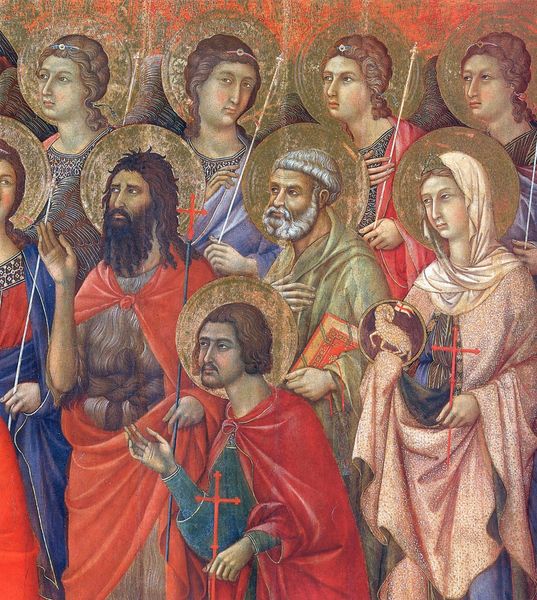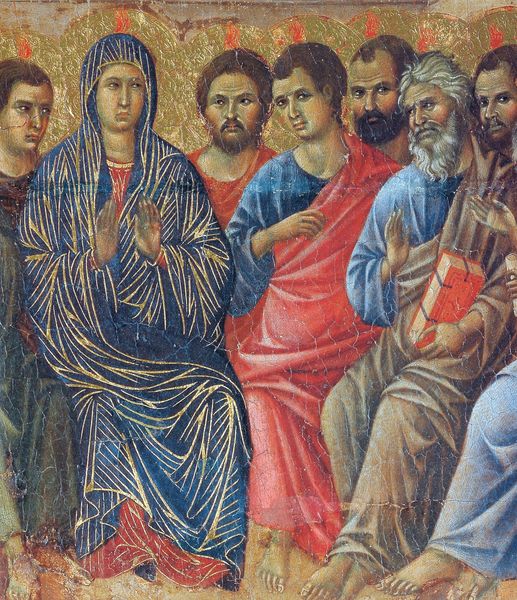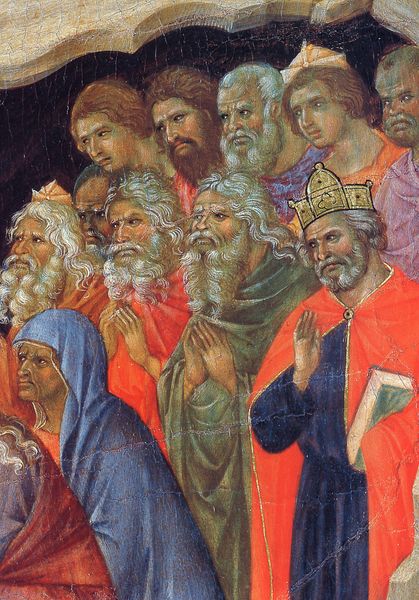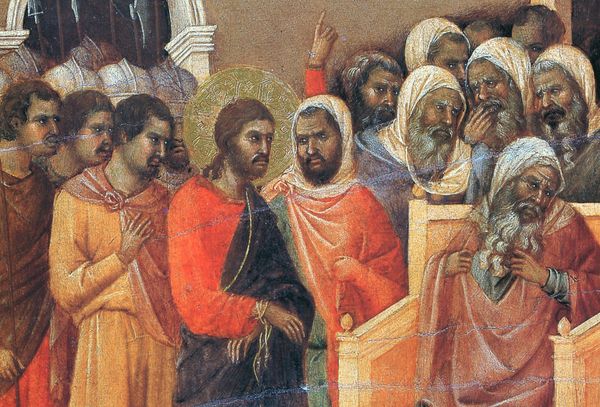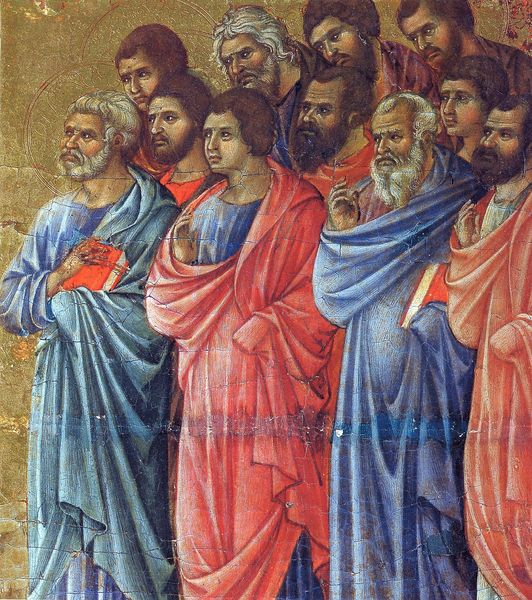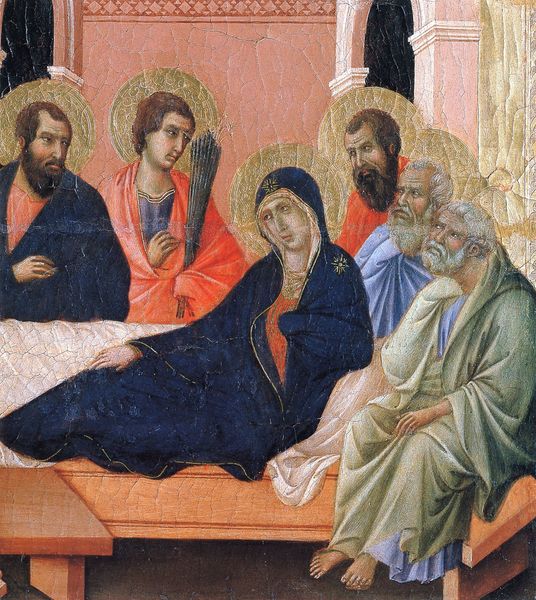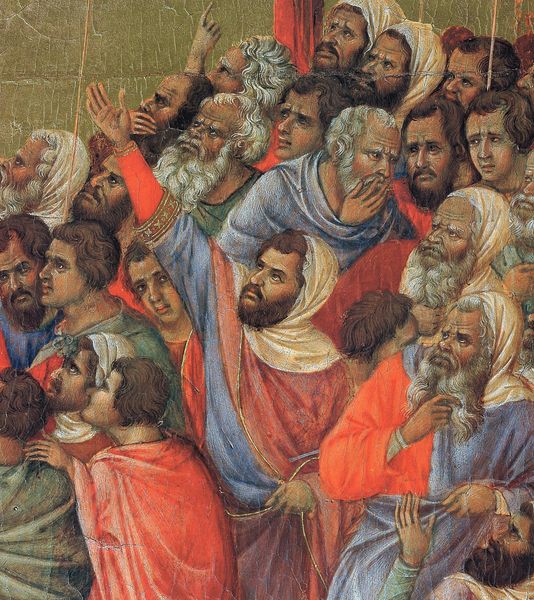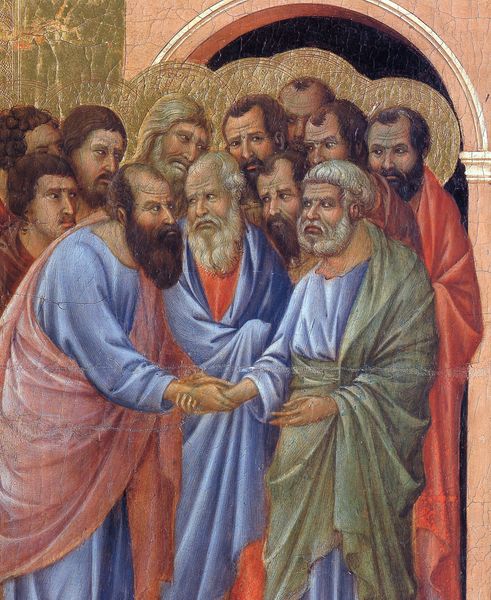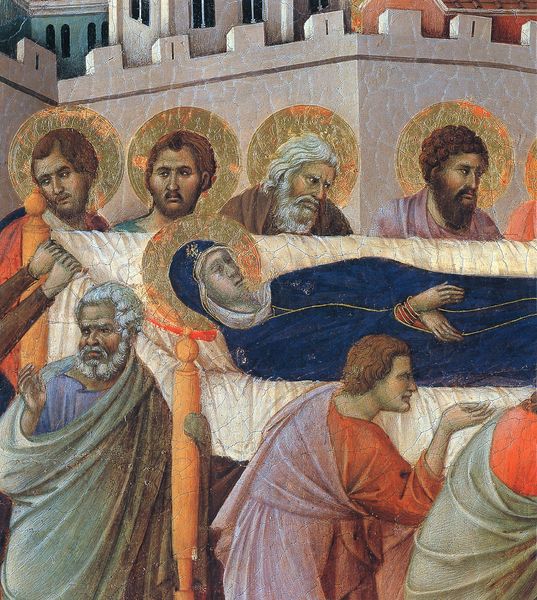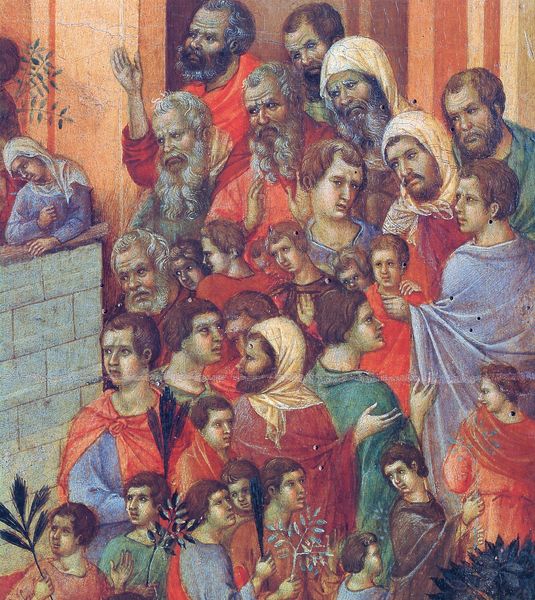
tempera, painting
#
portrait
#
medieval
#
tempera
#
painting
#
sienese-school
#
figuration
#
oil painting
#
group-portraits
#
christianity
#
history-painting
#
facial portrait
#
italian-renaissance
#
early-renaissance
#
portrait art
#
fine art portrait
#
christ
Copyright: Public domain
Curator: Looking at this, I am immediately drawn in by the density and formality of the piece. It's packed with figures, all haloed and staring intently. It's grand, somehow imposing. Editor: Indeed. What we see here is a fragment, the front side of "Madonna and Child on a throne", created by Duccio around 1311 using tempera. It represents an important bridge between the Byzantine style and the early Renaissance. Curator: The colours have a certain glow. The faces, though, are…interesting. They’re so standardized, almost like masks, especially the angels behind. It reminds me a little of theatre somehow, a carefully constructed scene. Do you think Duccio intended this sense of artificiality? Editor: In a way, yes. Duccio's workshop was integral to establishing a new approach to painting in Siena at this time. His aim wasn't so much naturalism, as it was to create a devotional image—a visible manifestation of sacred figures. Think of the hierarchies and social roles, which demanded an emphasis on symbolism. The gold halos are a perfect example: markers of divinity, of course, but also indicators of status within the celestial court. Curator: Yes, I see it. It makes me question, though, whether these conventions ultimately served their purpose. Looking at them now, I feel strangely distant from the figures. Do we miss the genuine emotional impact when it's all so stylized? Editor: It’s a question of context. For its original audience, such conventions may have actually enhanced the work’s spiritual power, by elevating the figures above the everyday. Think about it this way: this panel was part of a much larger altarpiece, "Maestà", commissioned for the Siena Cathedral. The sheer scale of the entire work, the lavish use of gold and colour, would have created an overwhelming impression of divine glory. Curator: Ah, when you frame it in that larger experience it makes far more sense. Now I’m really seeing the societal role of this work! Thanks for pointing that out! Editor: My pleasure. Considering it within the context for which the piece was created sheds so much more light on its role and purpose within the society for which it was intended.
Comments
No comments
Be the first to comment and join the conversation on the ultimate creative platform.
